
The practice of employing methods to alter the condition of the ball is as old as the international game itself. Popularly known as 'ball-tampering', the forbidden act often results in reverse swing, where the ball moves through the air at high speed towards the batsman.
The 141-year-old tradition is in the news again after Australia captain Steve Smith's admission that he was the mastermind behind the premeditated plan to alter the ball during the third Test against South Africa in Cape Town.
Not walking after edging the ball, claiming a catch that isn't clean or doctoring a pitch are all forms of cheating, but ball-tampering is the one deceitful act that is widely condemned.
Although polishing is the only action that can be legally performed on the ball, unlawfully tampering it is not as uncommon as you might think. Let us have a look at the ball-tampering controversies that have shaken the cricketing world over the years.
#1 John Lever (1977)
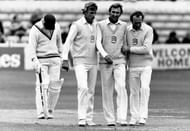
In the first recorded incident of ball-tampering, England pacer John Lever was accused of applying petroleum jelly on the ball to make it swing more during the third Test against India in Chennai.
In December 1976, Lever had a dream debut in Delhi Test with figures of 7 for 46 and 3 for 24 as he led the visitors to a massive win.
In the subsequent month, umpire Judah Reuben reported that Lever was carrying a strip of Vaseline-covered surgical gauze. Although there was a technical breach of the law governing 'fair and unfair play', the offence was declared completely unintentional, and therefore no charges were brought.
#2 Adam Parore (1990)
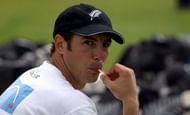
Former New Zealand wicket-keeper batsman Adam Parore openly admitted that the Kiwis had used bottle tops to tamper the ball during the Third Test against Pakistan in Faisalabad.
A decade later, Parore revealed that seamer Chris Pringle was the major beneficiary as he took an 11-wicket haul. Surprisingly, no charges were brought.
#3 Michael Atherton (1994)

In 1994, then England captain Michael Atherton was fined but he avoided suspension and held on to the captaincy after pictures emerged showing him rub loose dirt on the ball during the first Test against South Africa at Lord's.
Atherton insisted, "I put some dust in my pocket from a used pitch... to keep my hands and the ball dry". He denied the allegations and was subsequently cleared of the charges.
#4 Waqar Younis (2000)
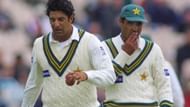
Pakistan pacer Waqar Younis was the first player to be suspended for ball-tampering when match referee John Reid banned him from playing against Sri Lanka in the middle of the triangular series also involving South Africa.
Younis worked on the ball with his fingers in a match against the Proteas and after being found guilty, he was also fined 50 percent of his match fees.
Claiming that he was cleaning the ball, Waqar expressed bewilderment when he said, "I've been doing the same thing for 15 years."
#5 Sachin Tendulkar (2001)

Legendary Indian batsman Sachin Tendulkar was given a suspended one-match ban and was fined 75 percent of his match fee by match referee Mike Denness, after being found guilty of ball-tampering during the second Test against South Africa.
Based on television footage, Tendulkar was seen removing grass from the ball. The ICC eventually decided this amounted to cleaning it without the umpire's permission rather than ball-tampering, and so overturned the ban.
#6 Rahul Dravid (2004)

Charged under clause 2.10 of the ICC's code of conduct, Rahul Dravid was fined 50 percent of his match fee, after being found guilty of ball-tampering during India's 24-run victory over Zimbabwe at Brisbane.
Dravid was caught by the TV cameras rubbing a cough lozenge on the shiny side of the white ball and the incident was reported to Clive Lloyd, the match referee, by the third umpire Peter Parker.
#7 Marcus Trescothick (2005)

In his autobiography Coming Back To Me, former England batsman Marcus Trescothick revealed that he used Murray Mints to produce saliva that kept the shine on the ball for a longer period of time as his team recorded their first Ashes victory after 18 years.
Trescothick's tactics aided with the unplayable swing delivered by England bowlers ensured that Australia lost the series 2-1. No charges were brought against England's official ball-shiner during that series, who retired before his book was published.
#8 Inzamam-ul-Haq (2006)
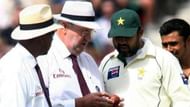
Captain Inzamam-ul-Haq was banned for four matches after umpires Darrell Hair and Billy Doctrove decided that the tourists had illegally altered the condition of the ball during the fourth day of the fourth Test between England and Pakistan.
In the first forfeited match in Test history, Pakistan refused to take the field in protest and Inzamam was held responsible for his team's actions. He was later cleared of the ball-tampering charges.
#9 Stuart Broad and James Anderson (2010)

The lethal England pace duo of Stuart Broad and James Anderson was accused of ball tampering during the drawn third Test against South Africa in Cape Town.
Broad was filmed treading on the ball, while Anderson appeared to be picking at the seam, prompting South Africa to raise concerns with the match referee.
Both the pacers rejected the accusations and strongly defended themselves as neither of them was charged.
#10 Shahid Afridi (2010)

In one of the most bizarre incidents of ball-tampering, Shahid Afridi Afridi was caught by TV cameras biting the ball during the fifth ODI between Australia and Pakistan in Perth.
The act was reported by the TV umpire to the on-field umpires and after a hearing with the match referee Ranjan Madugalle, Afridi pleaded guilty to the charge.
The Pakistan all-rounder's initial explanation was that he was "trying to smell it and how it was feeling". Although he later apologised and expressed regret for his actions, he was banned for two Twenty20 Internationals.
#11 Peter Siddle (2012)
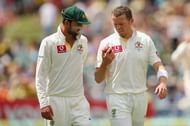
During the Hobart Test against Sri Lanka, Australia bowler Peter Siddle was accused of raising the seam of the ball after the pacer claimed five wickets for 54 runs in the first innings.
The visitors did not make an official complaint to the match referee Chris Broad, and Siddle was later cleared by the ICC.
#12 Faf du Plessis (2013)

South Africa batsman Faf du Plessis was fined half of his match fee by match referee David Boon for scuffing the ball on the zip of his trousers in a 2013 Test against Pakistan.
On-field umpires awarded Pakistan five runs and changed the ball. South Africa decided not to challenge the charge because of fear of a stronger punishment.
#13 Vernon Philander (2014)

Nine months after Faf du Plessis was charged with ball-tampering, South Africa's Vernon Philander was fined 75 percent of his match fee for scratching the ball with his fingers and thumb during a Test against Sri Lanka at Galle.
It is also worth noting that Philander's team-mate Dale Steyn achieved substantial reverse-swing in that match. The pace spearhead ripped through the hosts' lineup with three wickets in five overs.
The charge was not disputed by Philander and he accepted his punishment.
#14 Faf du Plessis (2016)
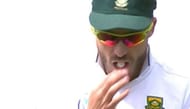
Faf du Plessis was charged for ball tampering yet again after the South African skipper applied saliva from a mint onto the ball during the second Test against Australia at Hobart.
Du Plessis, who pleaded not guilty to the charge, faced a marathon three-hour hearing with ICC match referee Andy Pycroft and was fined 100 percent of his match fee in addition to being handed three penalty points.
#15 Cameron Bancroft (2018)
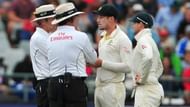
During the third Test of the 2018 series between South Africa and Australia, Australian opening batsman Cameron Bancroft was caught on camera placing a sticky yellow tape, which he used to rub the surface of the ball, down the front of his pants. Unfortunately for him, the act was spotted by the match referee, Andy Pycroft of Zimbabwe, which led to a global outpouring of outrage.
Captain Steve Smith and Bancroft admitted to the offence in a press conference, saying that senior Australian players had planned the tampering.
The fall-out from the incident resulted in Smith and his deputy David Warner stepping down from their roles as captain and vice-captain respectively.
The ICC suspended Smith for one Test and fined him 100 percent of his match fee while Bancroft was fined 75 percent of his match fee.
Looking for fast live cricket scores? Download CricRocket and get fast score updates, top-notch commentary in-depth match stats & much more! 🚀☄️
